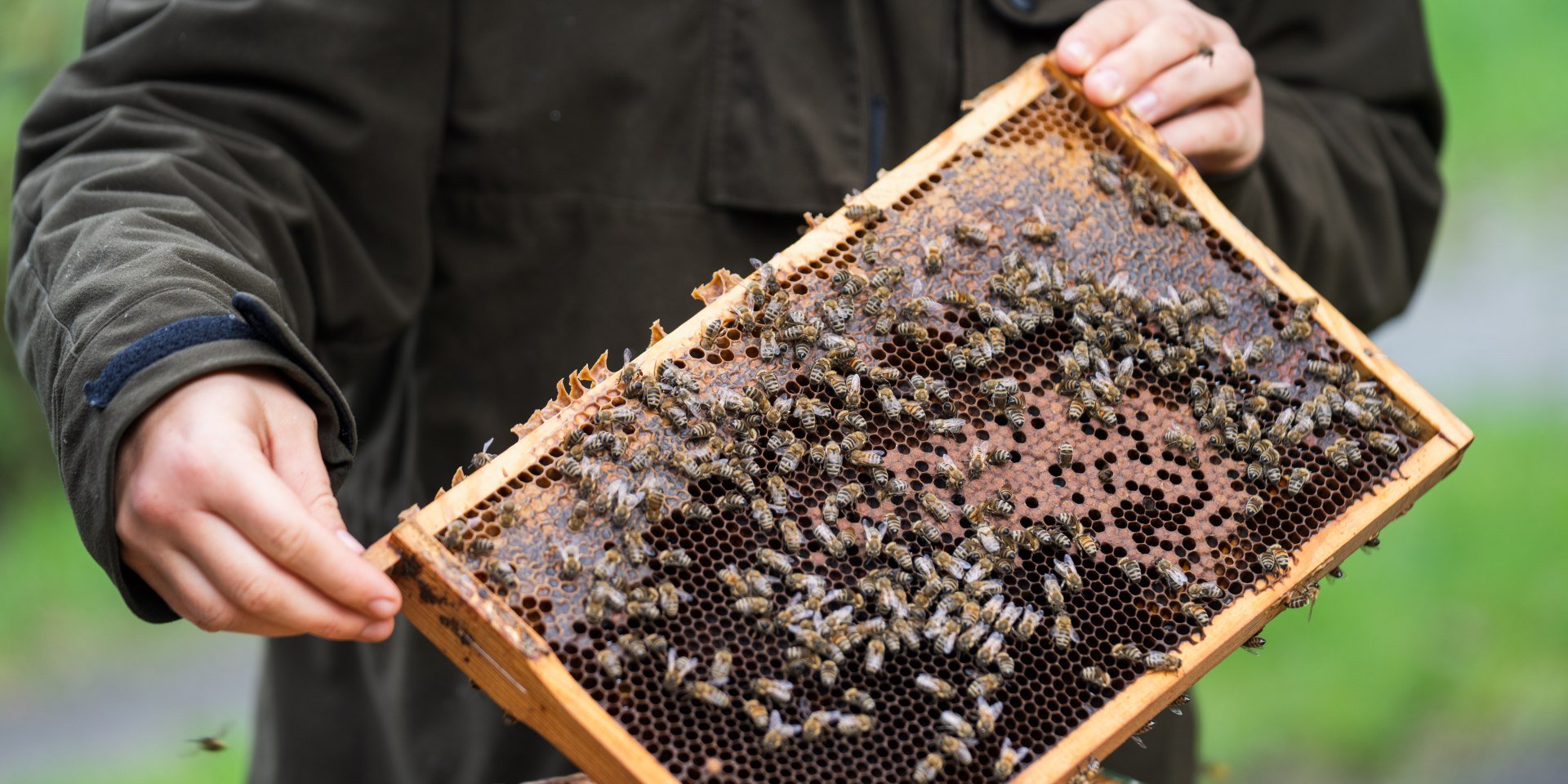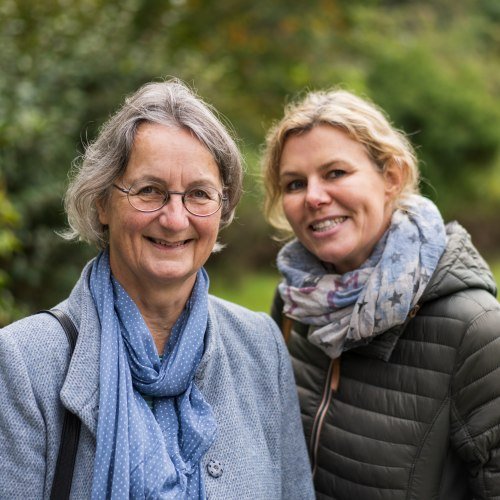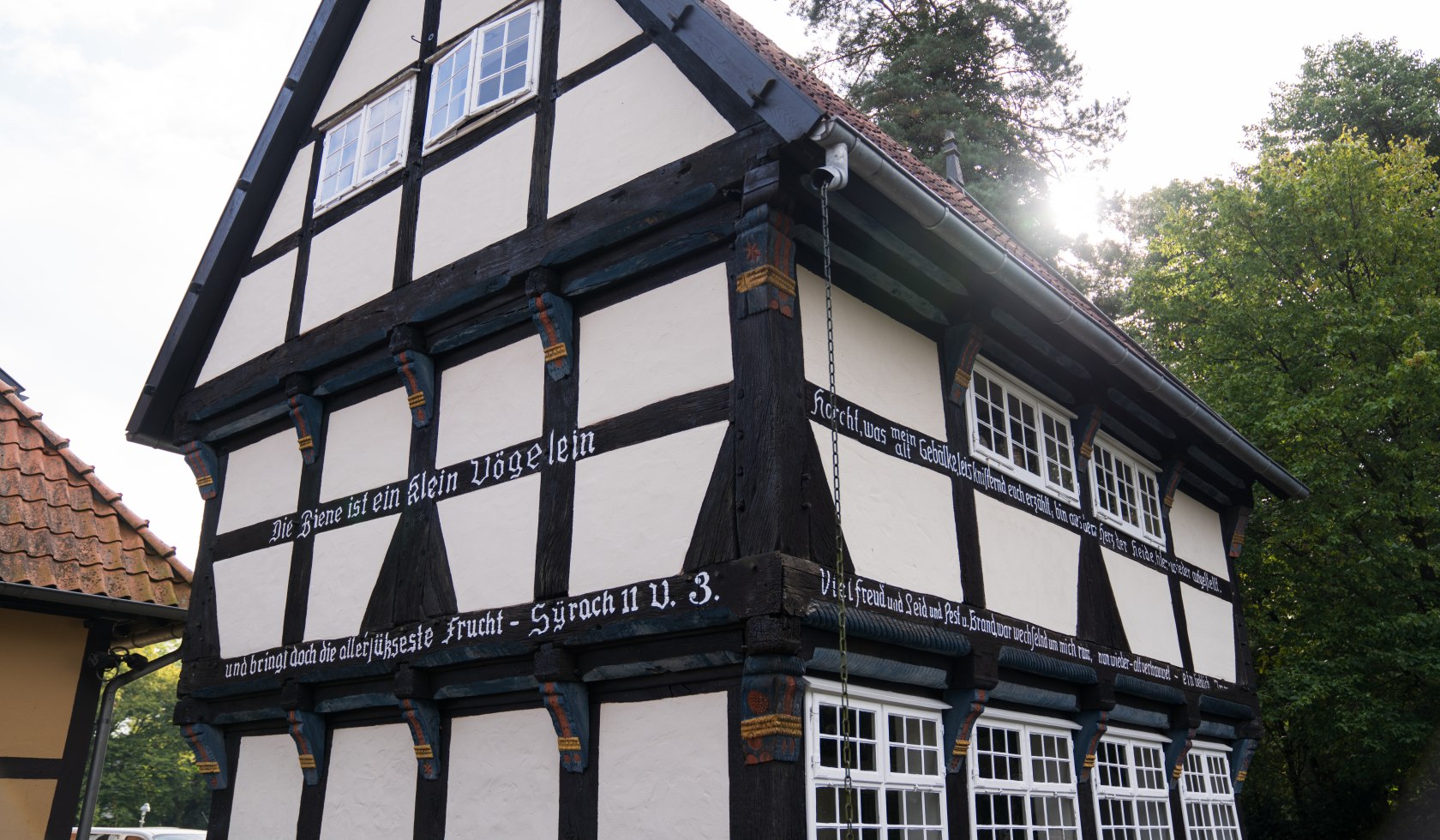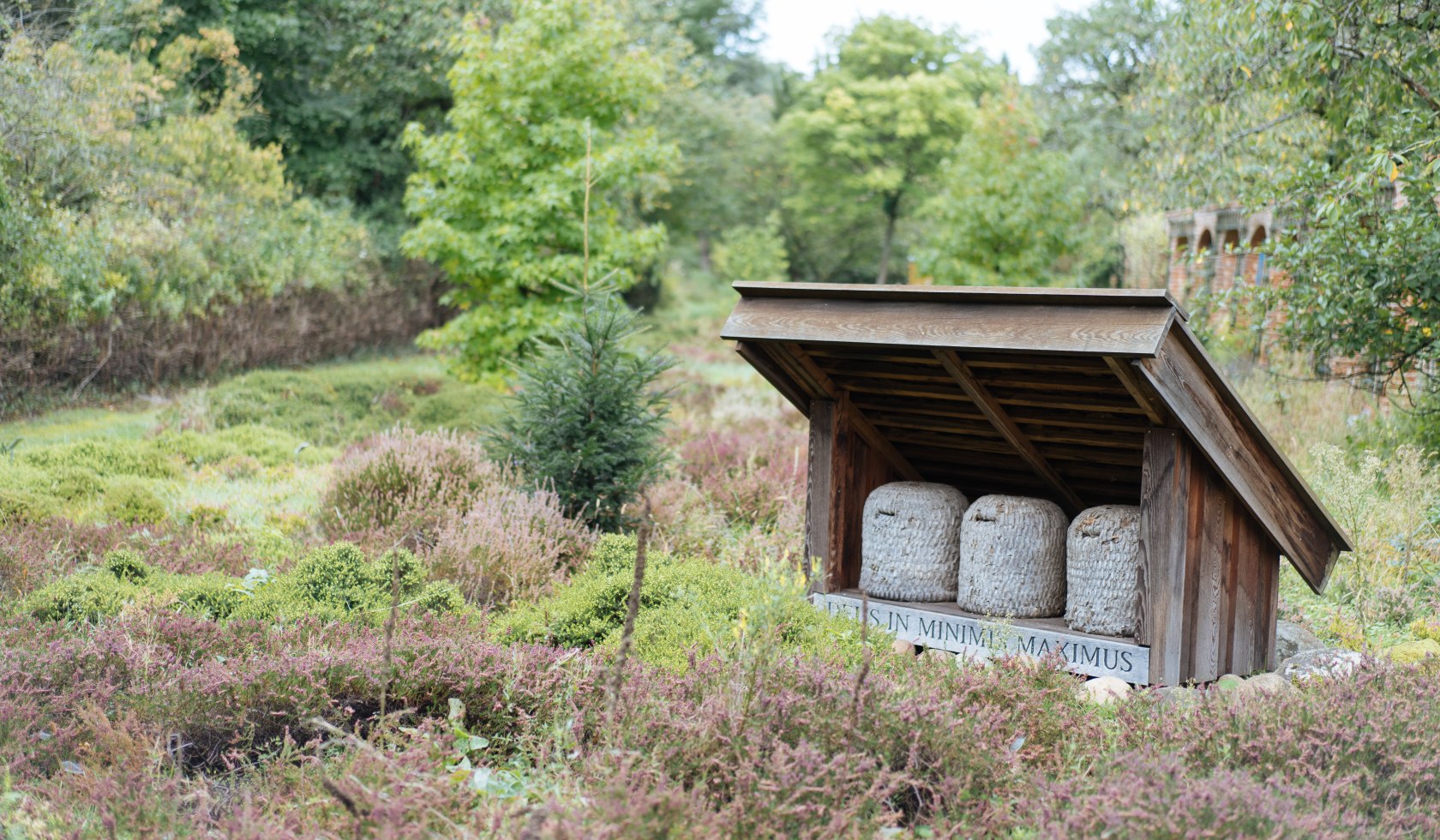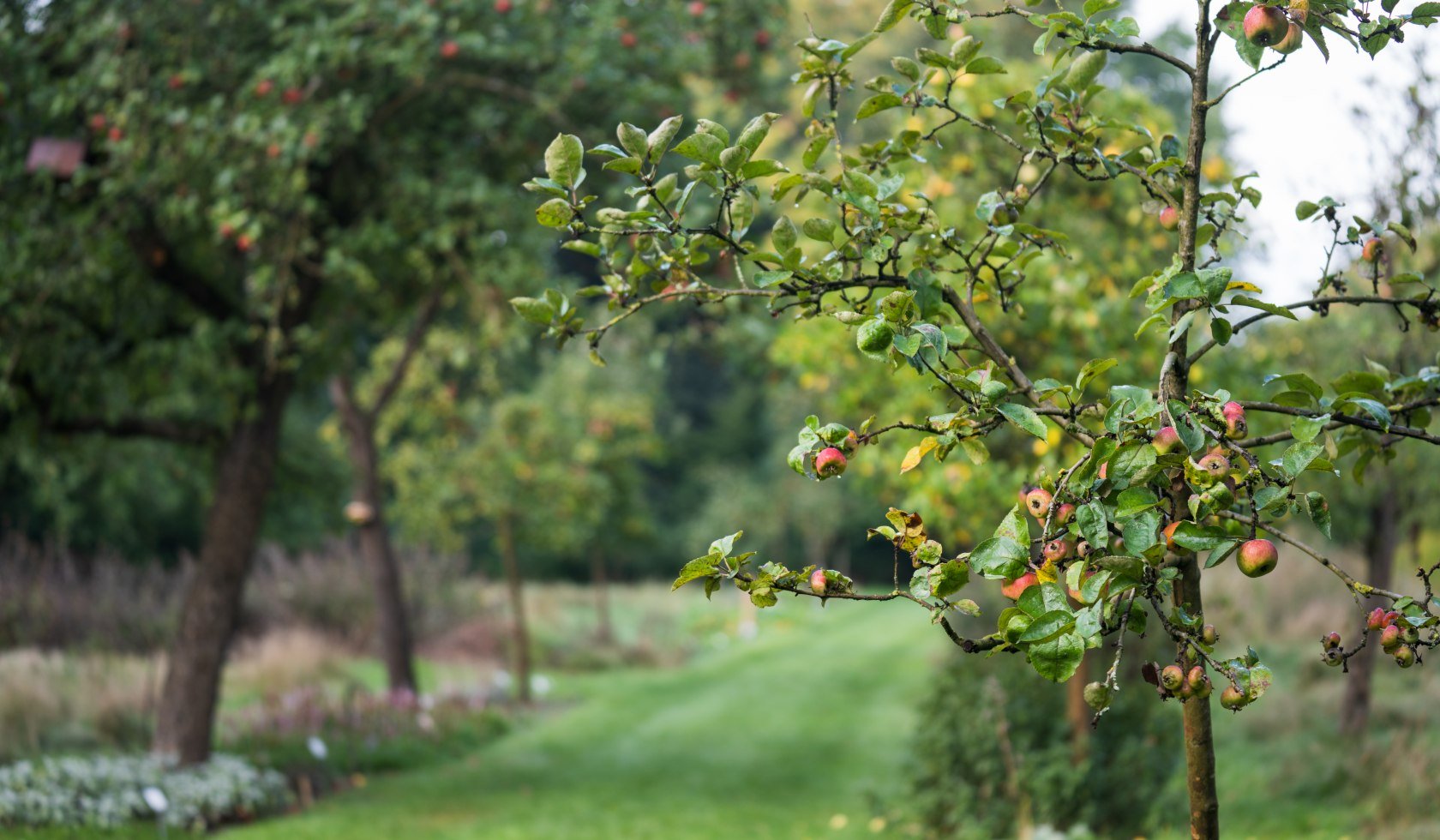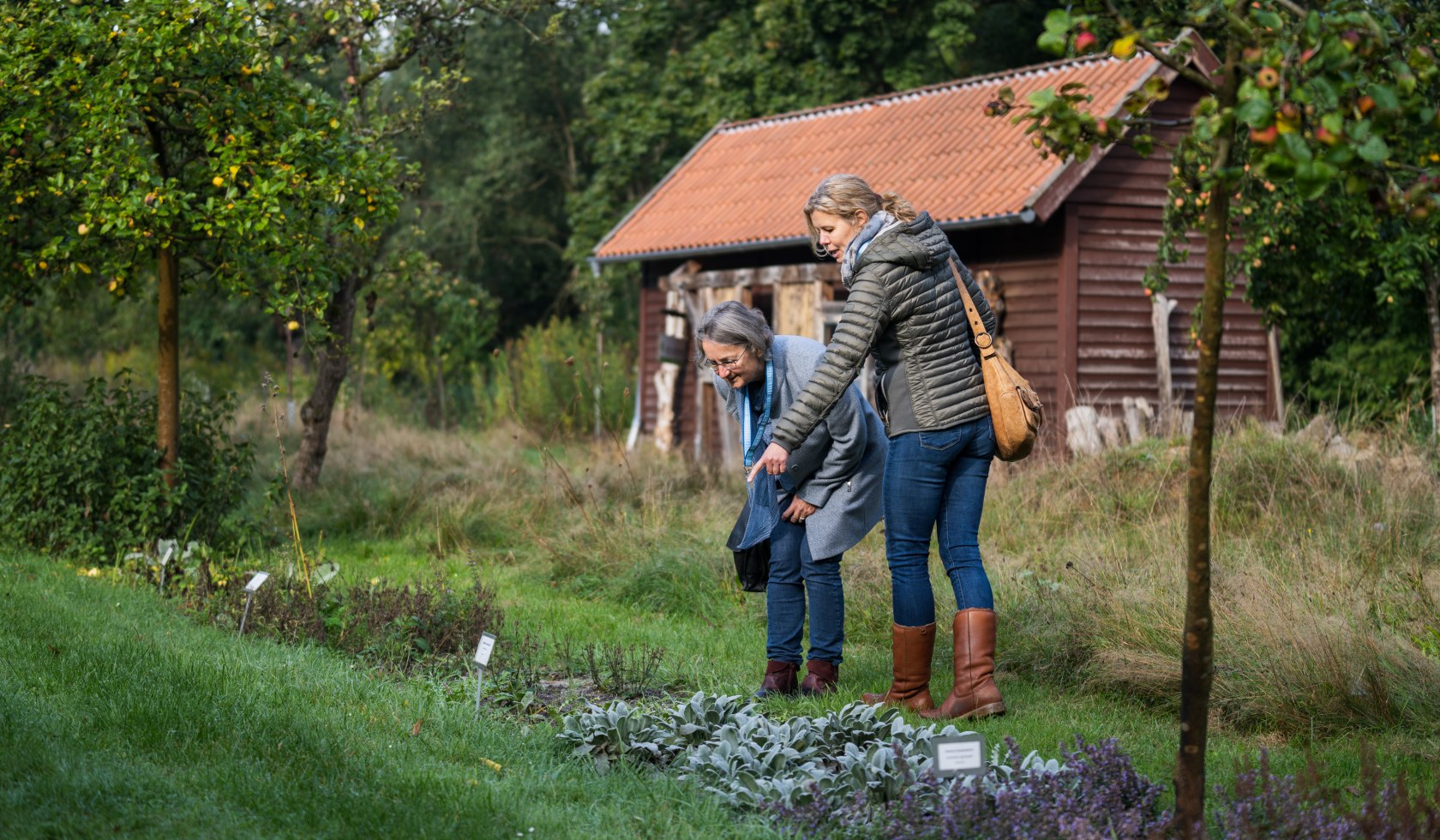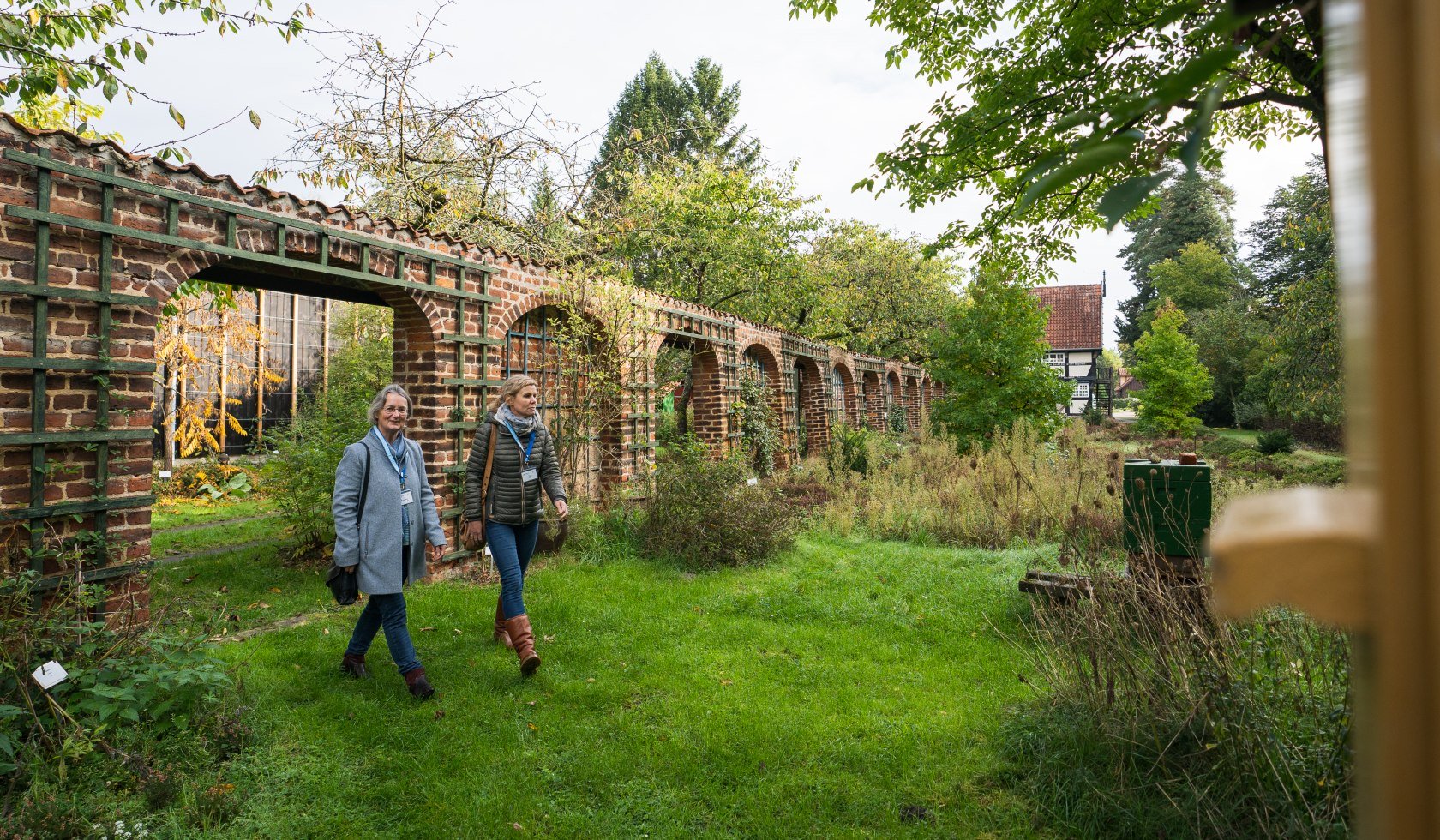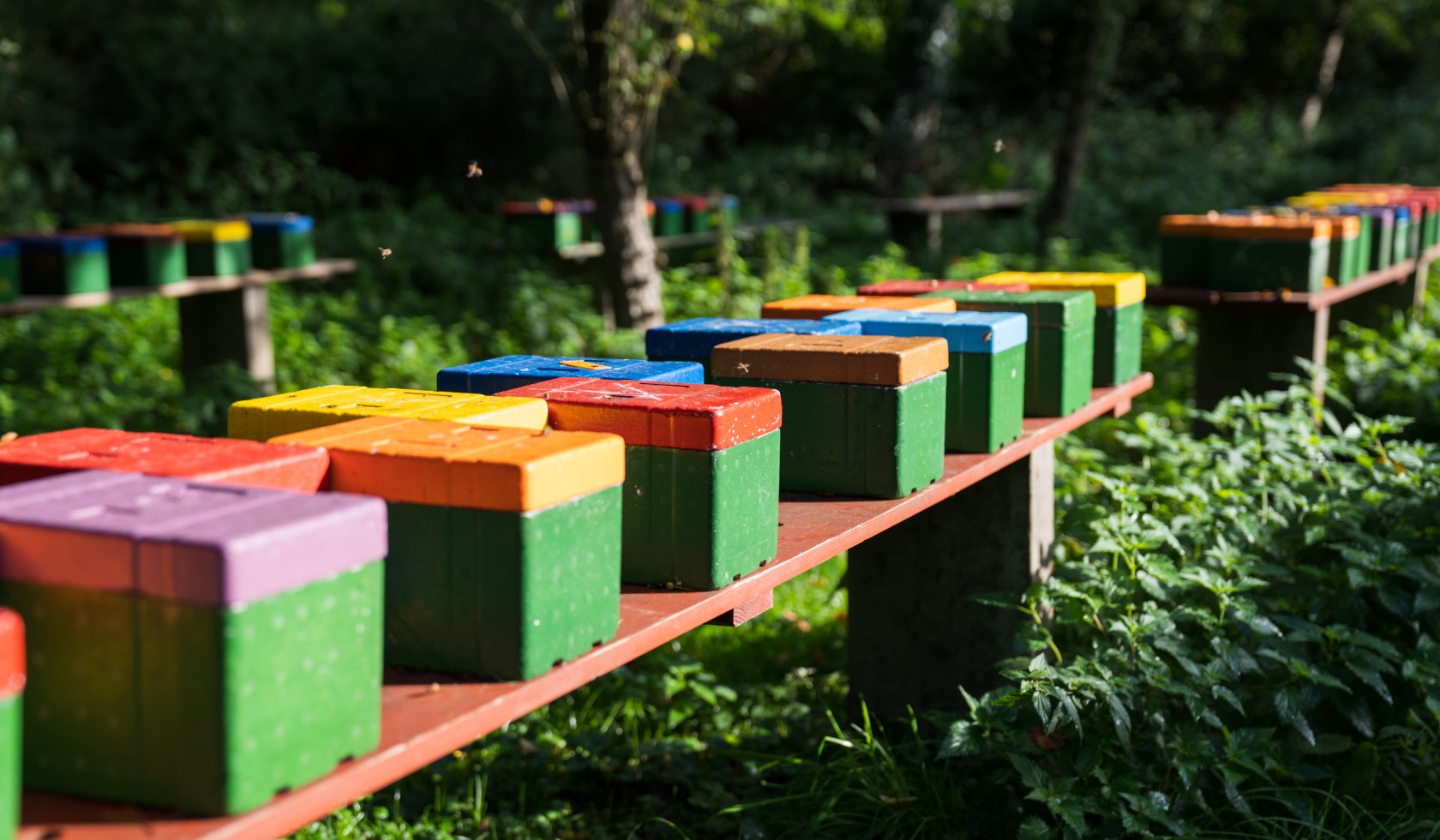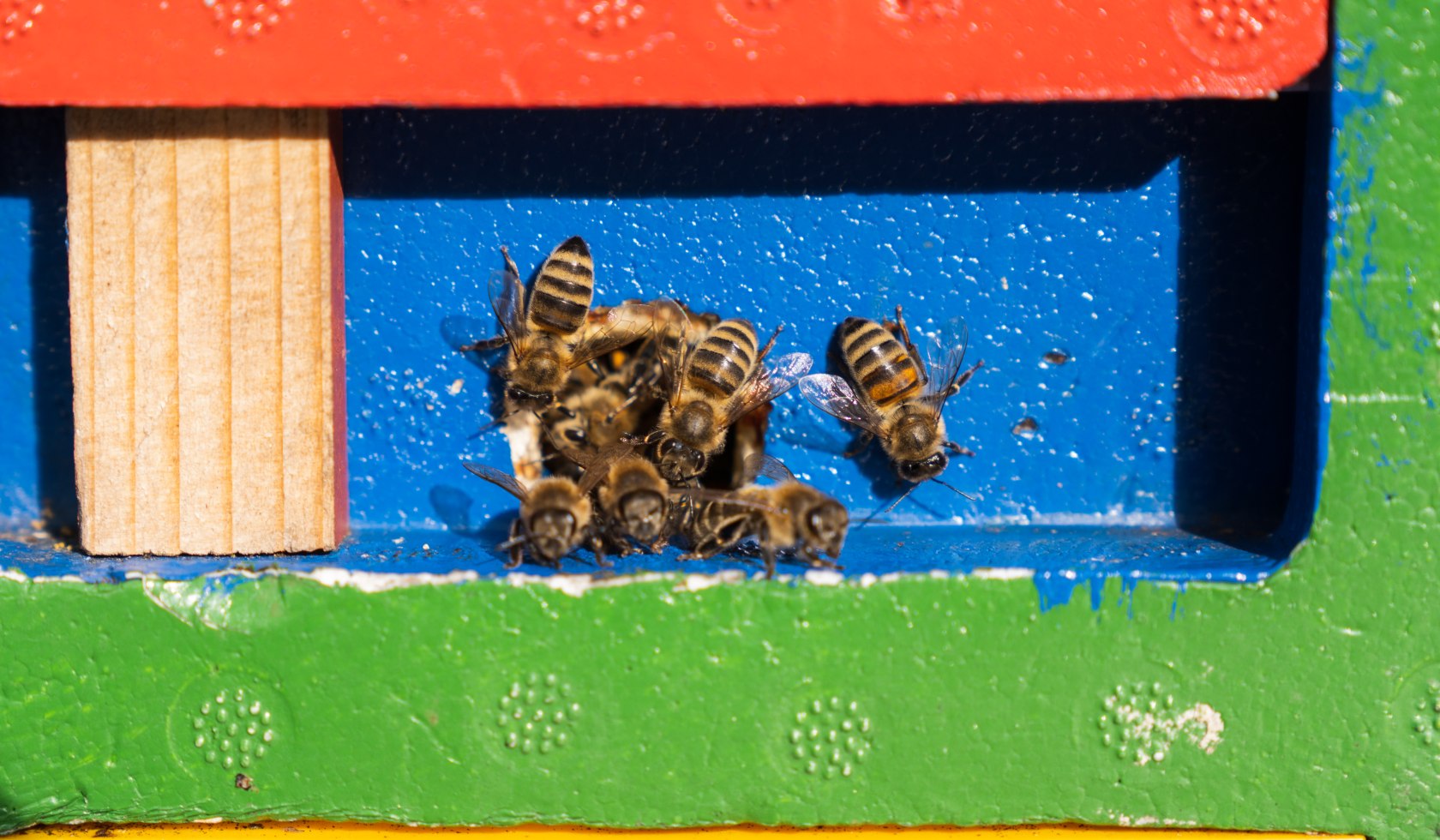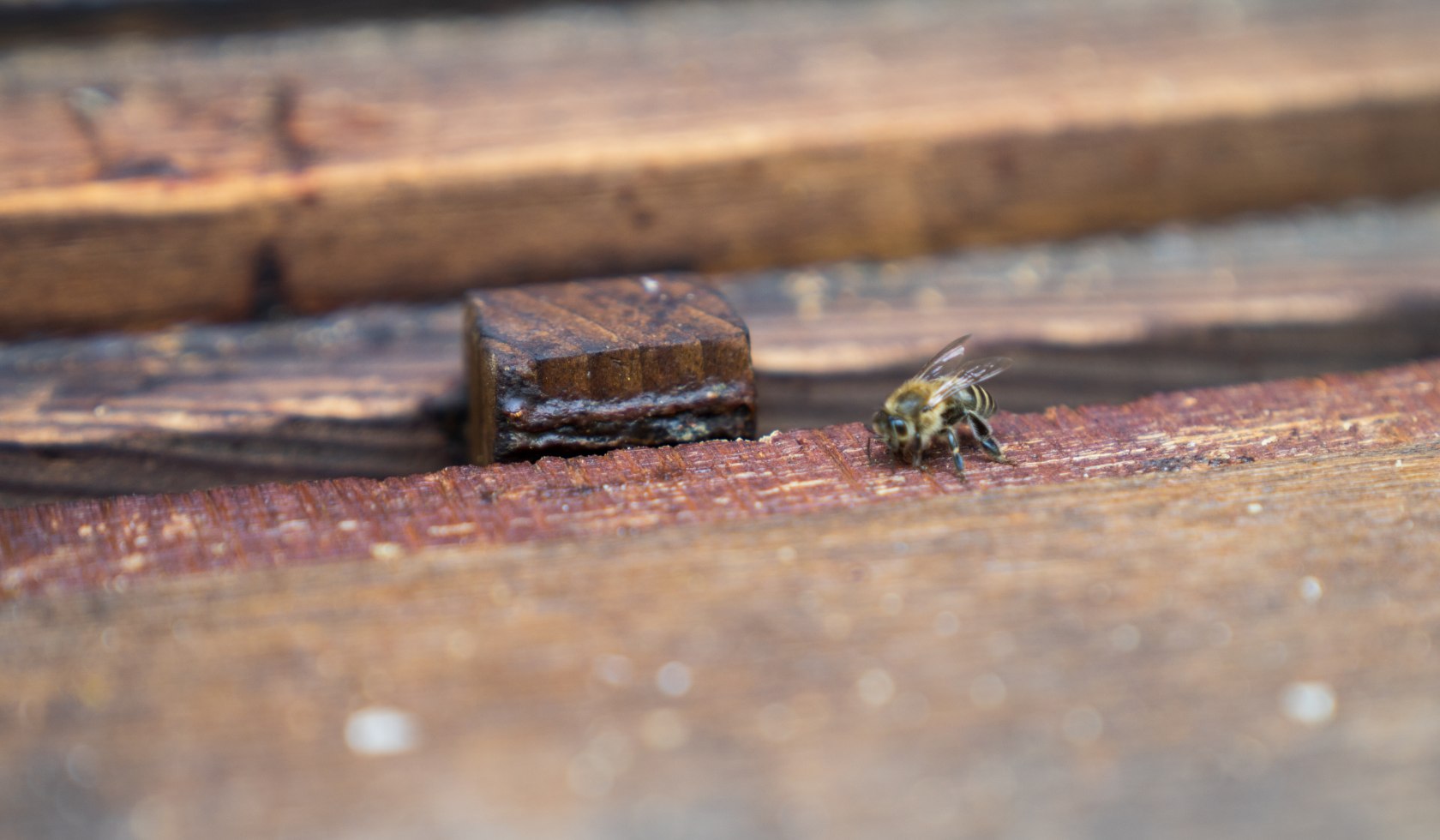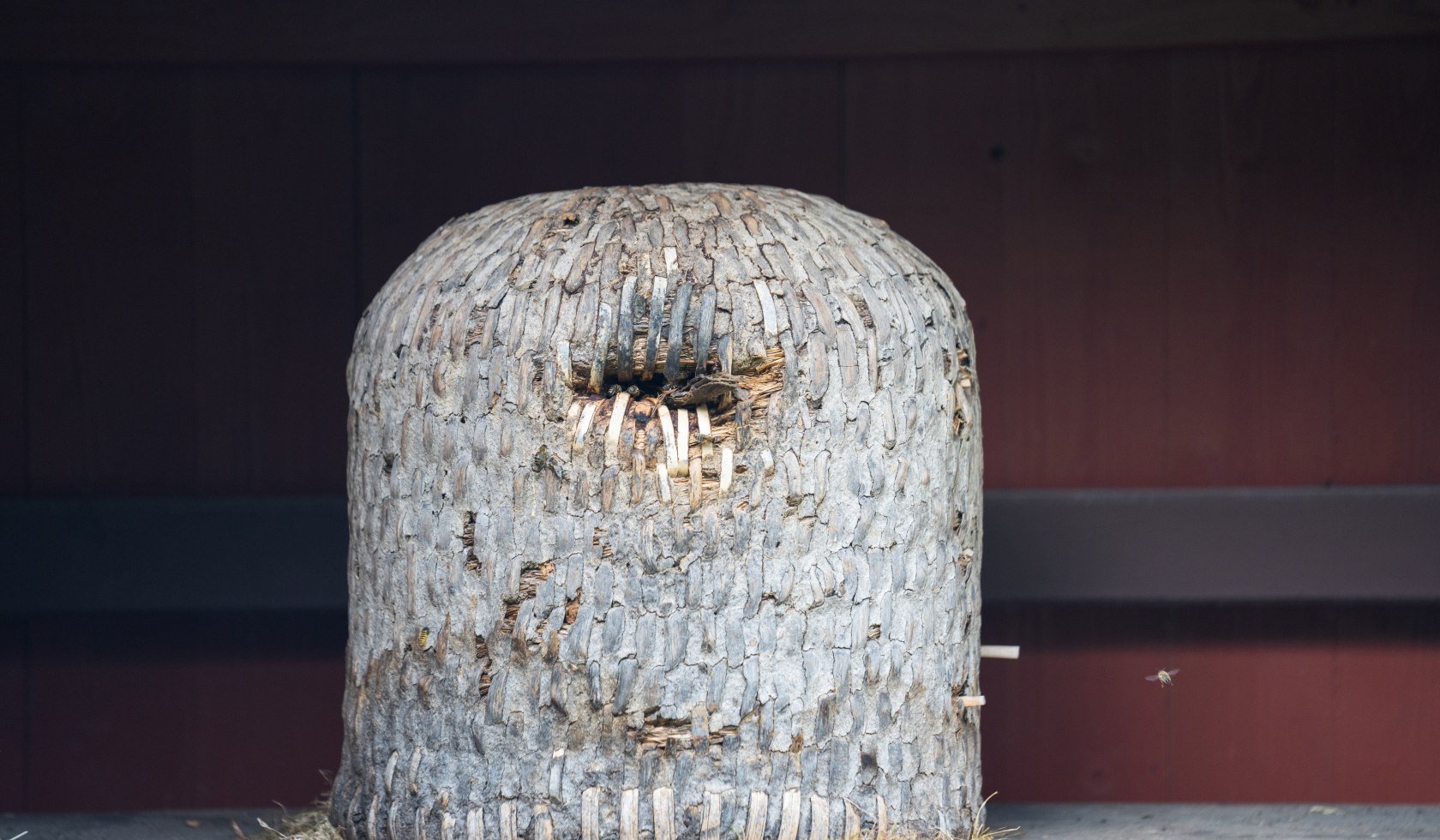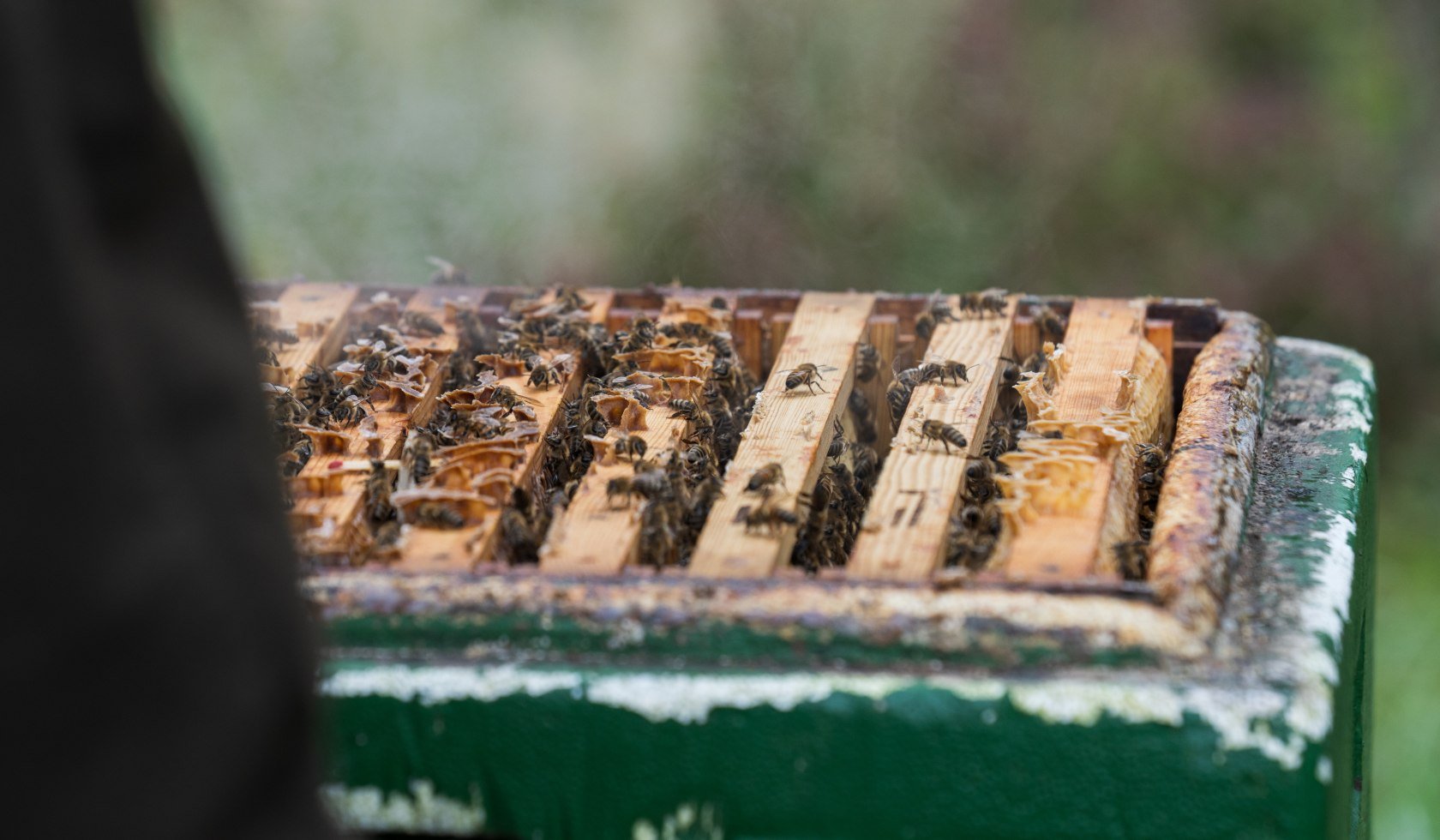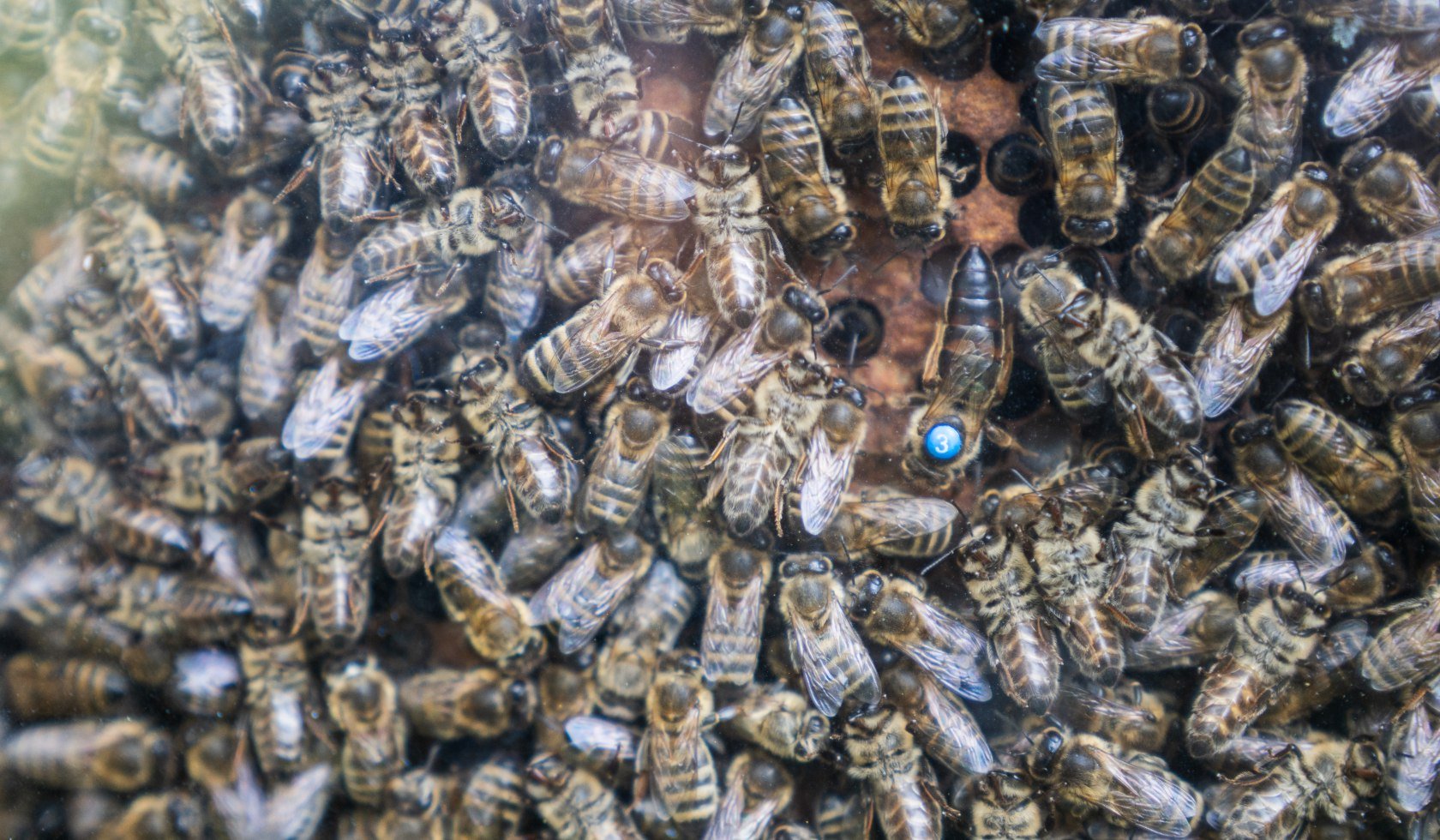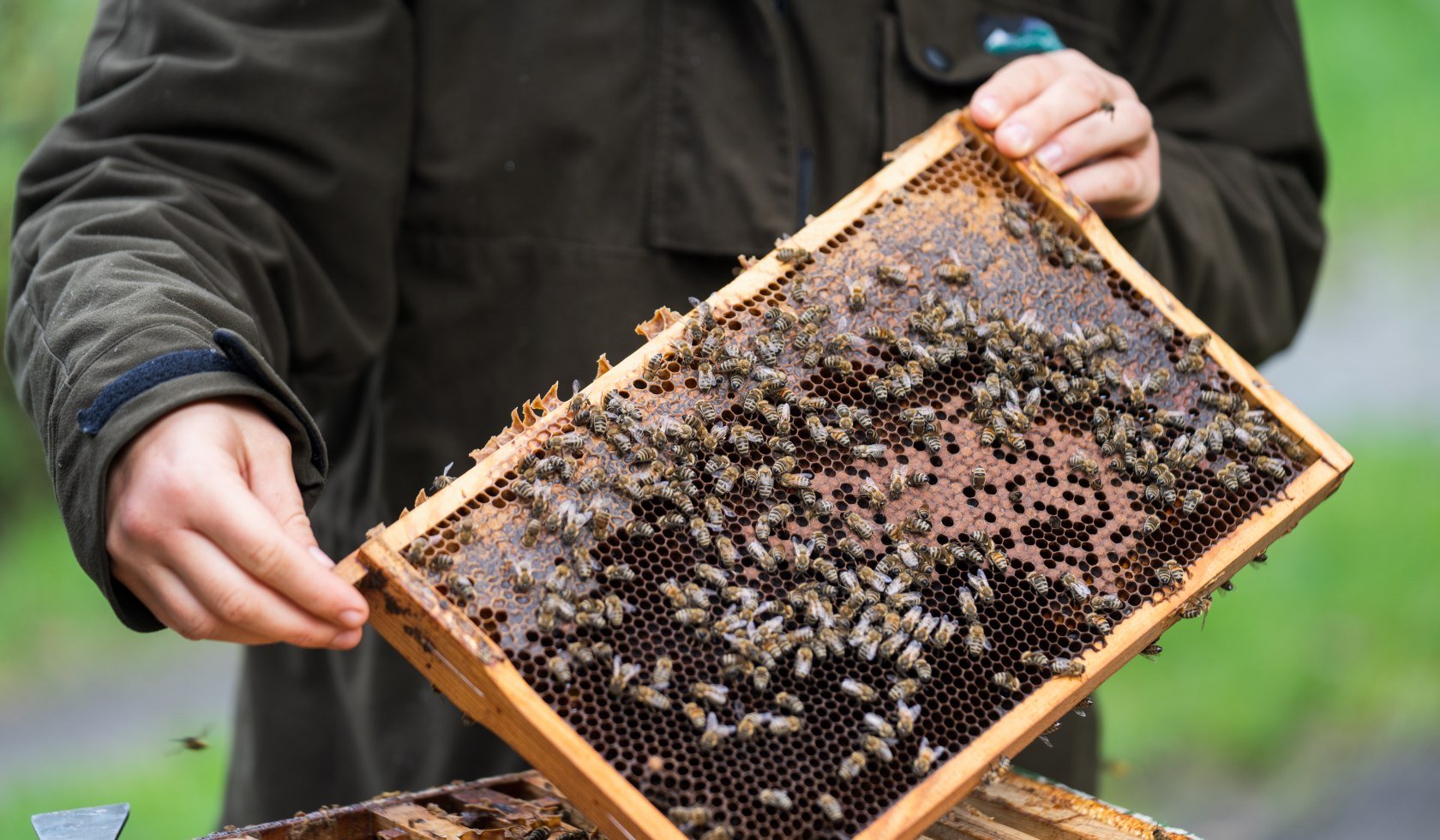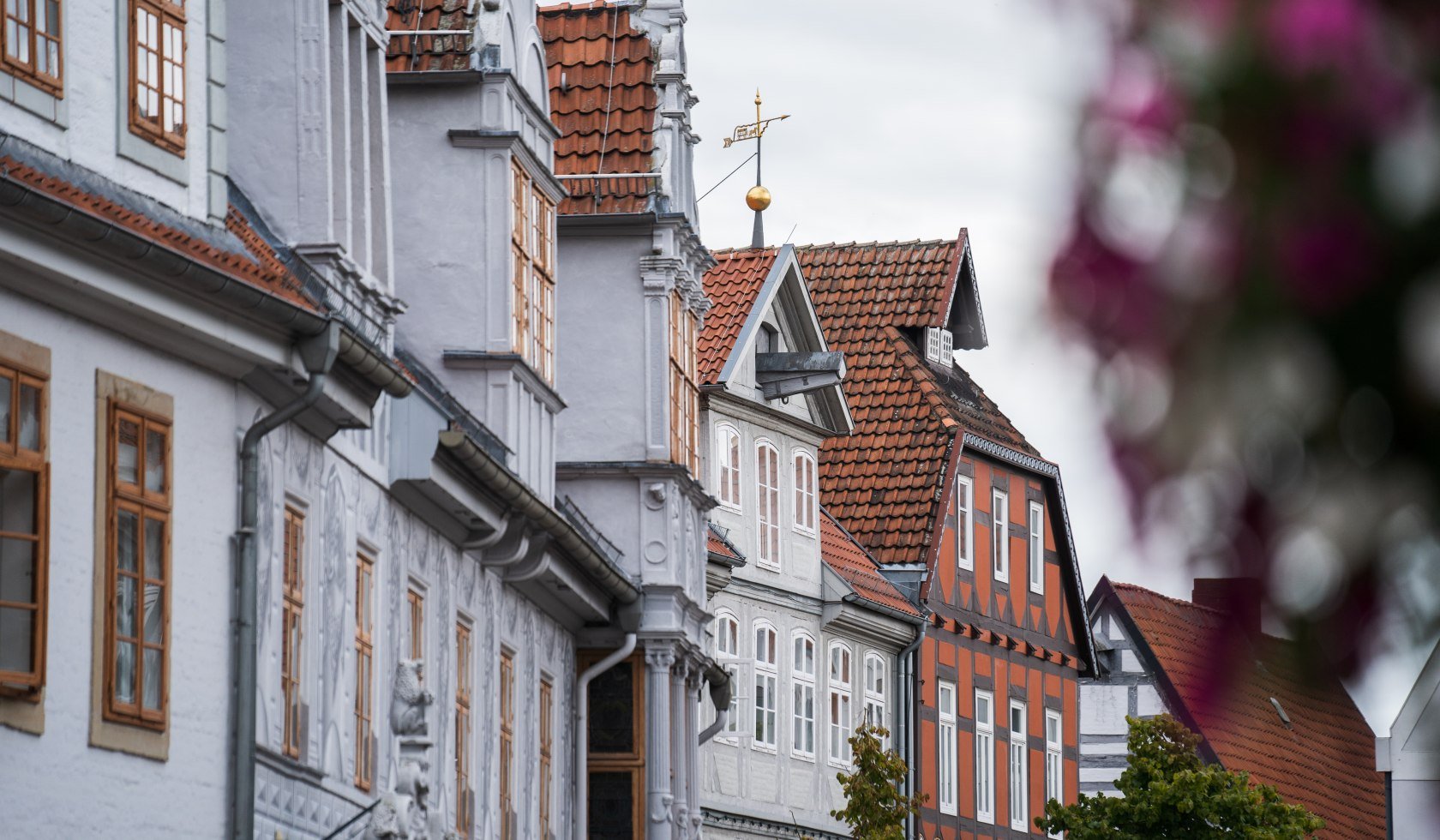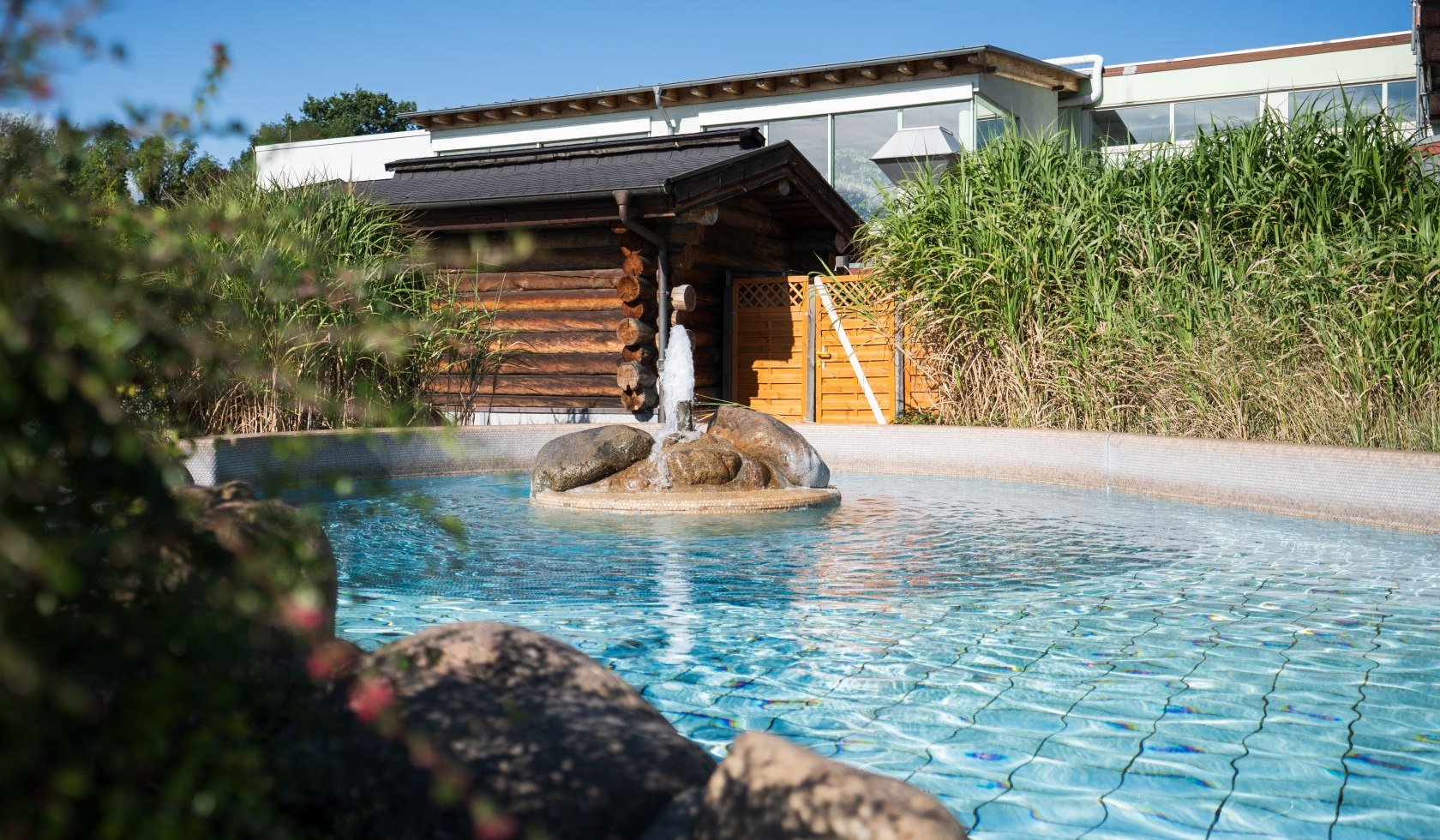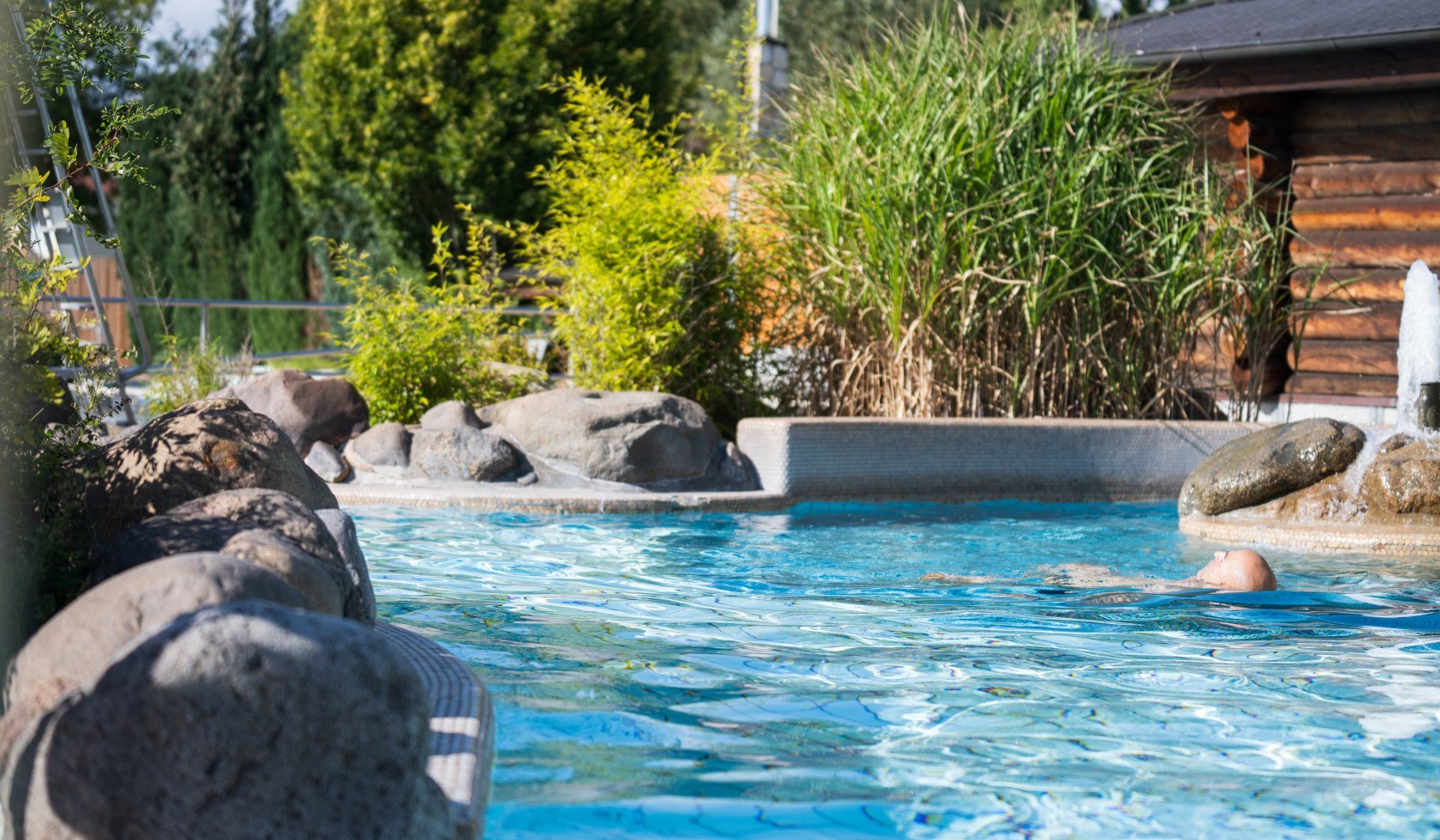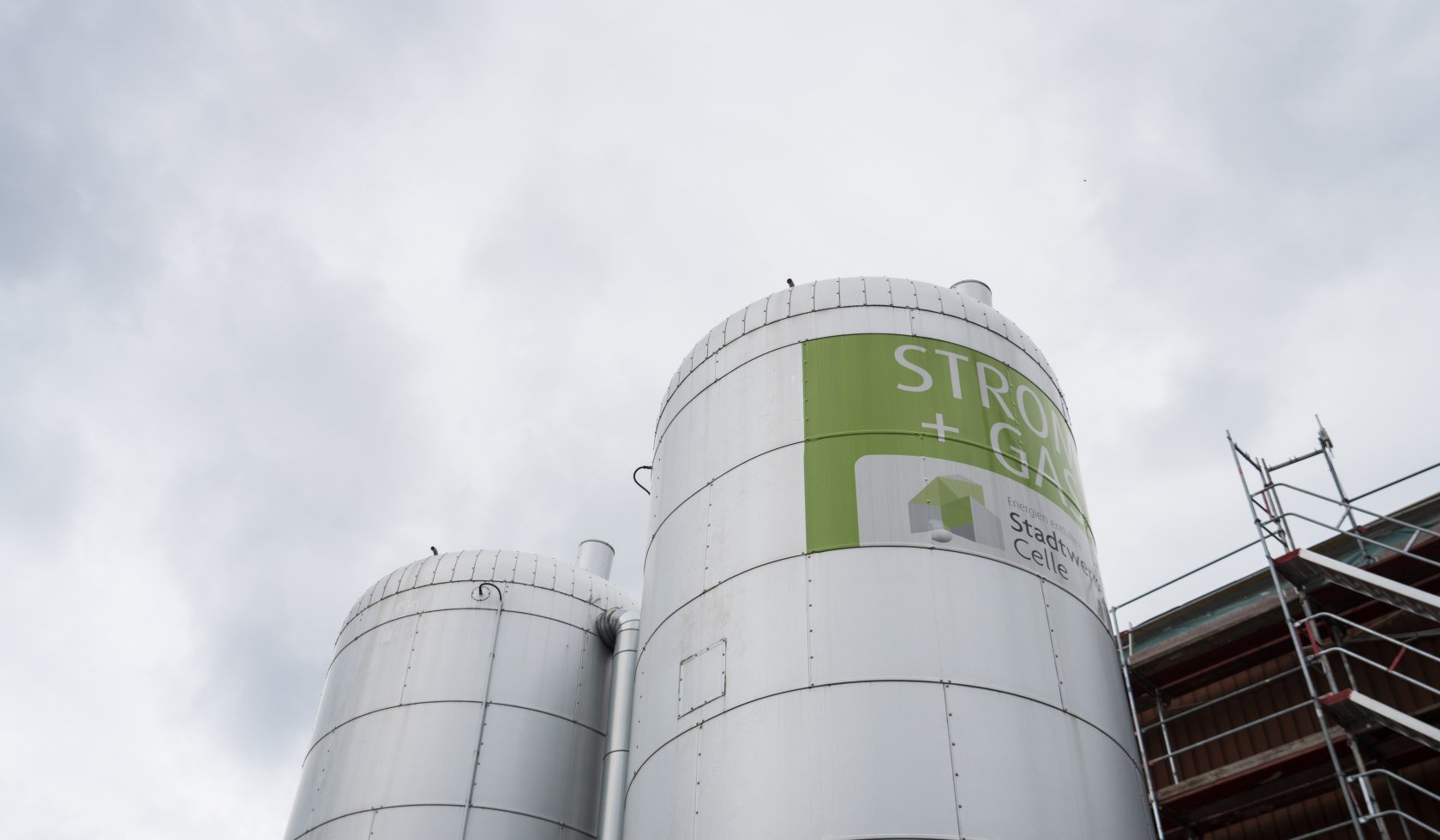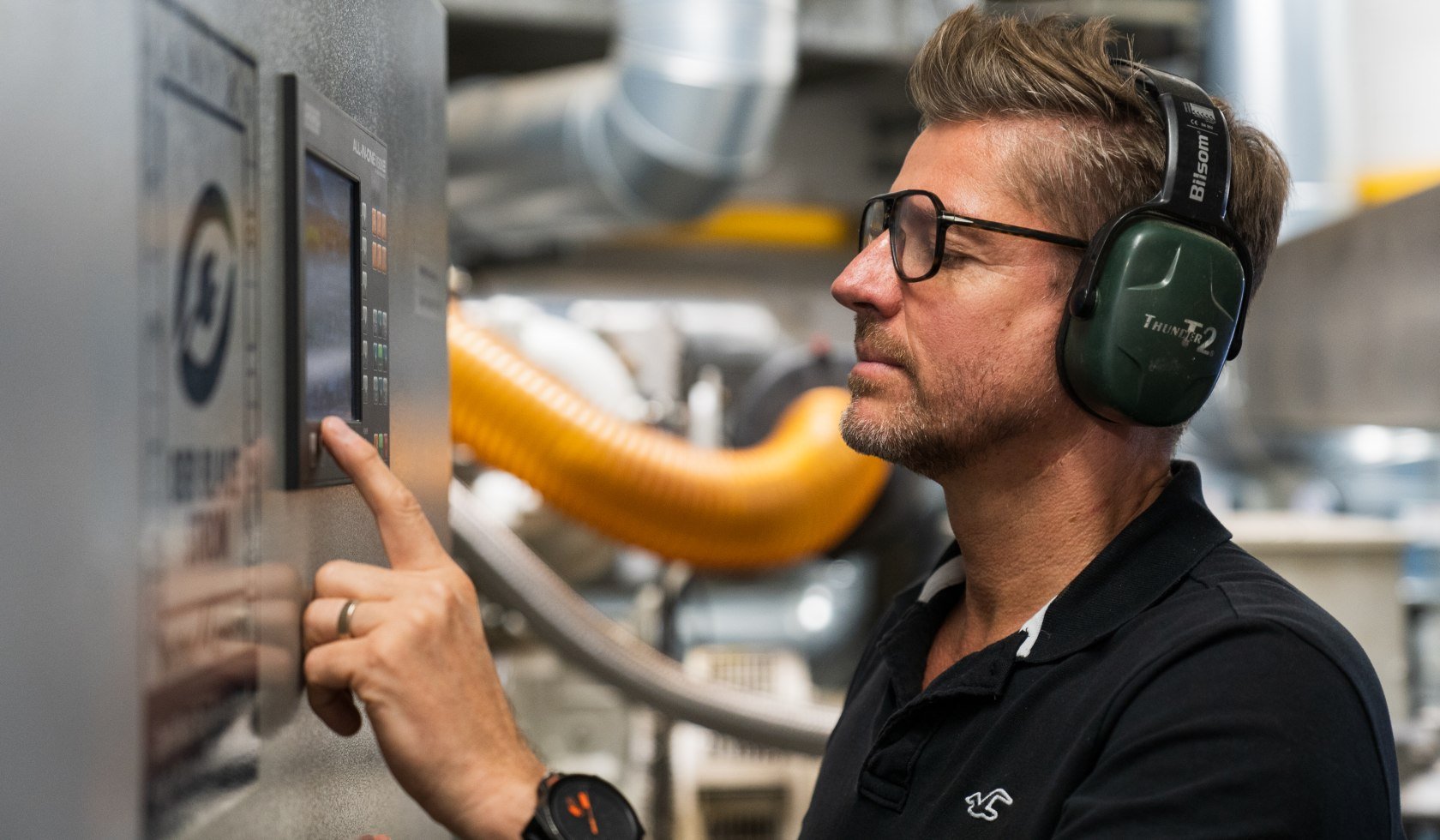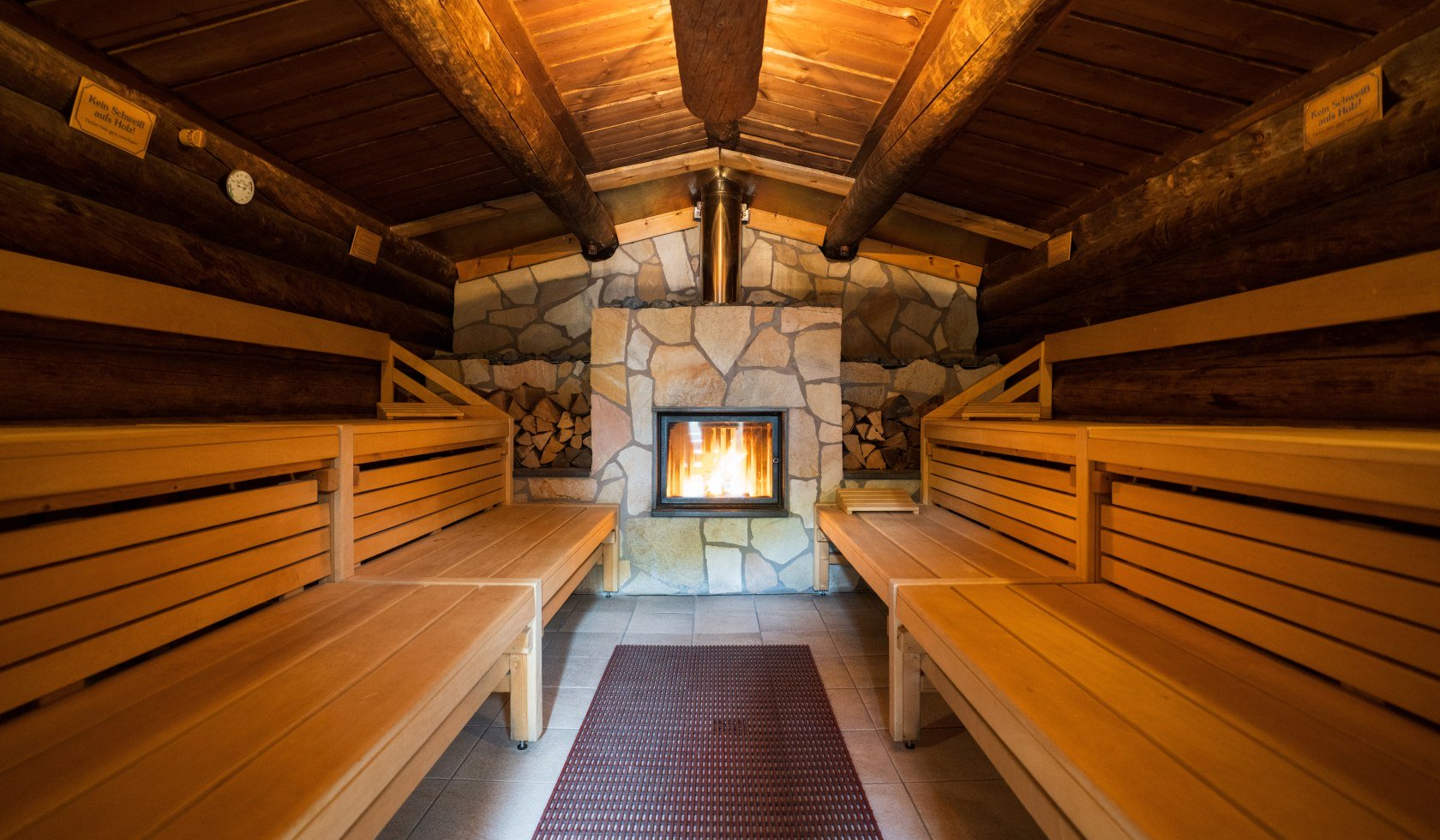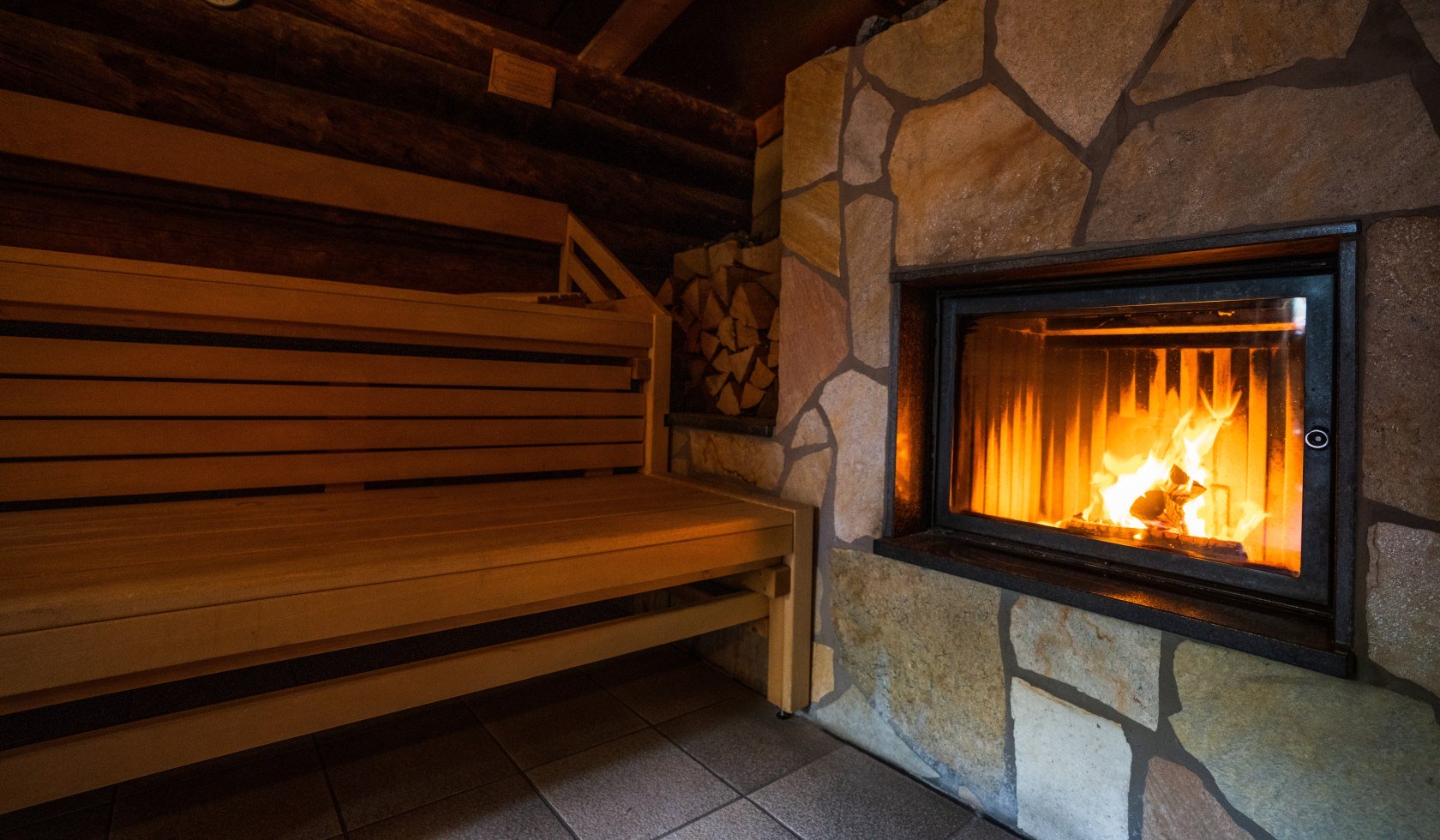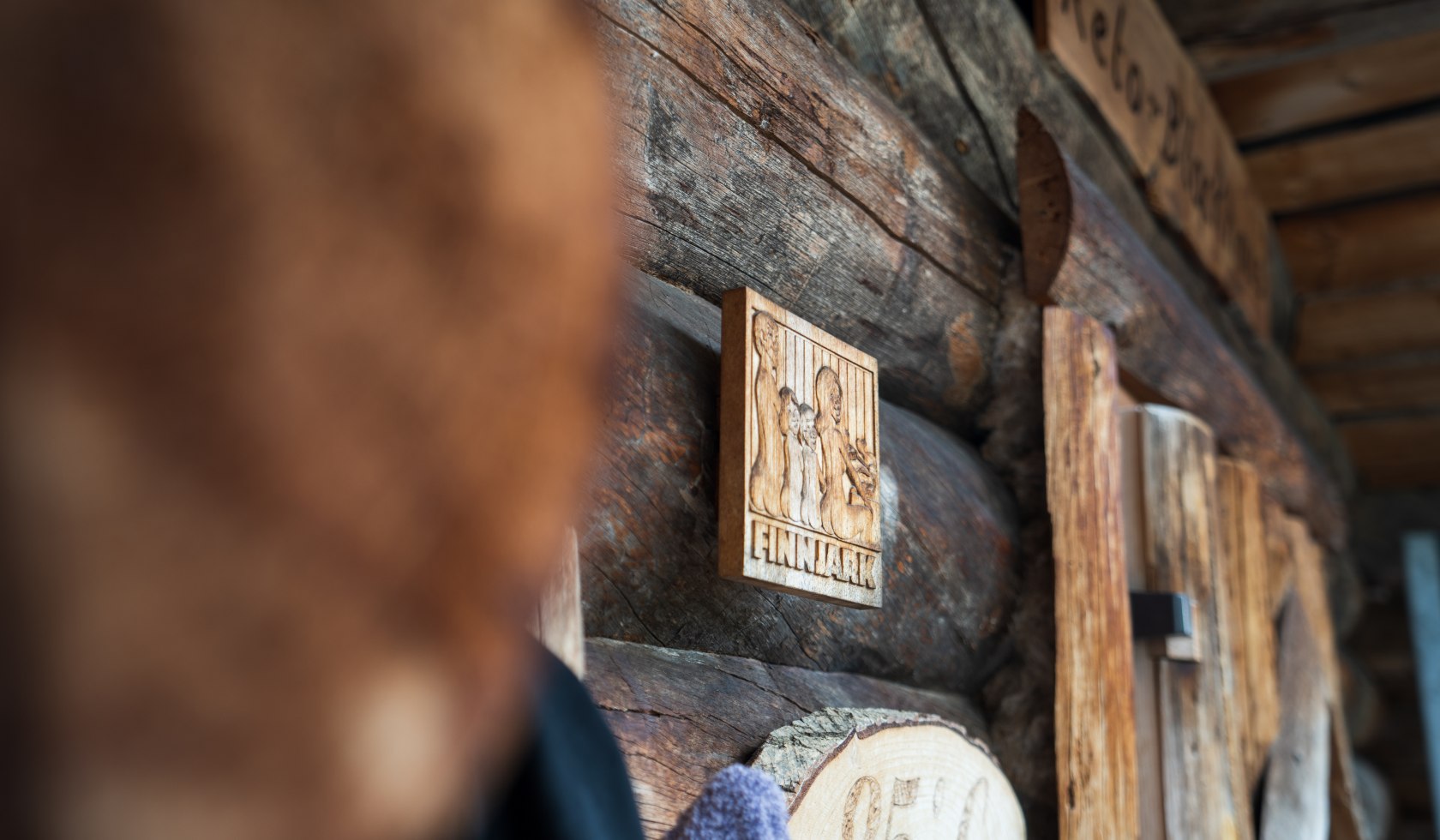Thomas comes down the steps of the slide and heads towards a building at the edge of the grounds that is surrounded by a high wooden fence. This is the latest sustainable achievement of the Celler Badeland water park: an event sauna that runs on heat recovery and solar power. The scent of fresh wood and sauna infusion wafts out the open door. Inside, the sauna is bright and spacious. Fifty guests can enjoy special infusions such as so-called singing bowl infusions and beer infusions. Sauna attendant Jeffrey Müller is standing in the empty sauna preparing the next sauna infusion. He is already wearing the pointy felt hat that protects his head from the heat.
Heat is not just used here to make people sweat, as Thomas explains. ‘Thanks to heat recovery, the heat of the sauna can also be used to heat the shower cubicles and the relaxation room.’
The windows in the hallway of the sauna building look out over the courtyard. Wrapped in bathrobes and towels, some of the sauna guests lie here on loungers, eyes closed enjoying the autumn sun, which not only provides them with a hit of vitamin D, but also their warm shower here at the Celle Badeland water park. If you look closely, black solar panels are visible on the roof of the sauna just a few metres above your head. These panels generate enough energy to easily heat all the shower water.
‘Every year the Celle public utilities have to prove that the city has earned its certification as a sustainable city with building projects such as this one,’ says Thomas. For Celle Badeland this means improved insulation and a green roof in the year ahead. For the city of Celle this means another step towards a sustainable future.


